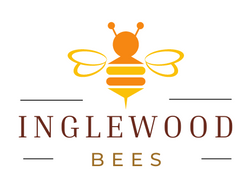Beekeeping is a rewarding and fascinating hobby where you can contribute to the health of the environment while enjoying the sweet rewards of honey production. As a new backyard beekeeper, setting up your first hive is an exciting endeavor. However, it's important to approach beekeeping with the right knowledge and preparations to ensure the well-being of your bees and your success as a beekeeper. In this article, we will provide you with important advice and things to consider as you embark on your journey as a backyard beekeeper.
- Educate Yourself: Before setting up your first hive, it is crucial to educate yourself about beekeeping. Read books, research online, attend local beekeeping classes or workshops, and connect with experienced beekeepers in your area. Familiarize yourself with the life cycle of bees, beekeeping equipment, hive maintenance, and potential challenges you may encounter.
- Choose the Right Hive: Selecting the appropriate hive style is an important decision. Common hive types are Langstroth, top-bar hives and Flow Hives. Langstroth hives use vertically-stacked frames, while top-bar hives use horizontal bars. Flow Hives are a more recent innovation which contains a unique honey extraction system using Flow Frames. All types have their advantages and disadvantages, so choose the one that aligns with your preferences and local beekeeping regulations.
- Location, Location, Location: Find a suitable location for your hive. Bees thrive in areas with access to nectar and pollen sources, so will love a backyard that provides a diverse range of flowering plants. Additionally, choose a location that receives adequate sunlight and offers some protection from strong winds. Consider proximity to neighbors, as some people may have allergies or concerns about bees.
- Hive Placement and Orientation: Place your hive on a stable and level surface, such as a sturdy hive stand or cinder blocks. Orient the entrance of the hive away from strong prevailing winds to reduce the likelihood of bees being blown off course. Position the hive in a way that allows easy access for maintenance and inspections.
- Obtain Quality Bees and Equipment: Purchase bees and equipment from reputable suppliers. Obtain a nucleus colony (nuc) or package bees from a trusted source. Ensure you have all the necessary equipment including frames, foundation, hive bodies, supers, a protective suit, gloves, a smoker, and a hive tool.
- Regular Hive Inspections: Perform routine hive inspections to monitor the health and progress of your bees. Inspect for signs of disease, brood health, honey production, and queen performance. Follow a gentle and careful approach during inspections to minimize disruption and stress to the bees.
- Provide Adequate Food and Water: Bees require a consistent food supply to thrive. While Bees can travel in a 2km radius it is ideal to ensure your backyard has abundant flowering plants throughout the year, including a variety of nectar and pollen sources. Consider planting bee-friendly flowers and herbs. Additionally, provide a water source near the hive, such as a shallow birdbath or water container with floating objects to prevent drowning.
- Practice Integrated Pest Management: Be vigilant about potential pests, such as varroa mites and small hive beetles. Learn about integrated pest management techniques to prevent and manage infestations naturally, reducing the need for chemical treatments. Monitor your hives regularly and take appropriate actions if pests are detected.
- Register as a Beekeeper and Join Beekeeping Associations: Any person who keeps honeybees must register as a beekeeper every 12 months. Engage with your local beekeeping community by joining beekeeping associations or clubs. Attend meetings, workshops, and field days to learn from experts and other beekeepers.

